South Korean fighter hawk, the KF-21, gets ready to take off soon - Here's what we know
Prashant-prabhakar
19 Jun 2022
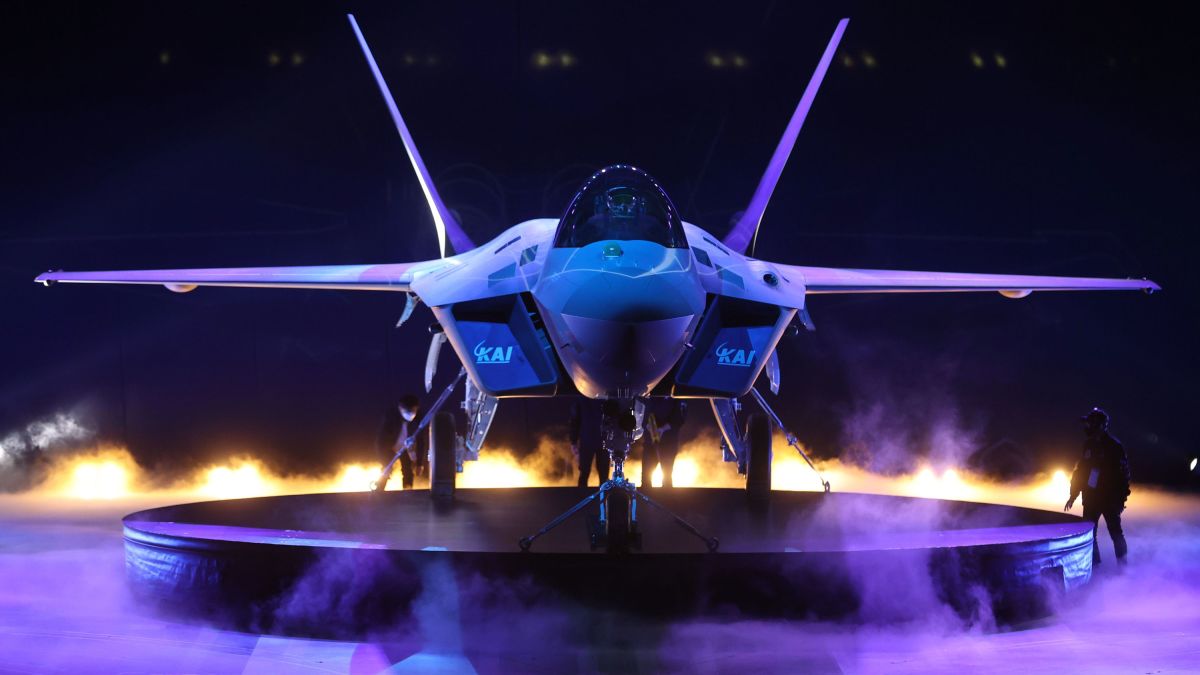
The KAI KF-21 Boramae (formerly known as KF-X), is a fighter aircraft development program between the South Korean and Indonesian air forces with an 80:20 split between Seoul and Jakarta.
Popular Mechanics
The fighter craft derives its name from the historical term describing one-year-old hunting hawks specifically trained for traditional falconry and is projected to form the future backbone of the Republic of Korea Air Force (ROKAF) and the Indonesian air force (TNI-AU).
Touted to be a 4.5-generation fighter, the airframe is reportedly stealthier than any fourth-generation fighter. However, it does not carry any weapons in internal bays like fifth-generation fighters although internal bays could be introduced later in development.
From the vault
First announced in March 2001, the KF-X advanced multi-role jet fighter project was initially intended to replace South Korea's ageing F-4D/E Phantom II and F-5E/F TIGER II aircraft.
McDonnel Douglas F-4D/E Phantom II | Wikipedia
After weathering numerous delays and postponements, on 15 July 2010, a partnership was made with Indonesia, which would provide 20% of the funding for the KF-X project and cooperate with technological development through state-owned Indonesian Aerospace.
In April 2021, the first prototype was completed and unveiled during a rollout ceremony at the headquarters of KAI (Korean Aerospace Industries) in Sacheon.
Tech and specs
The initial goal for the program was to develop a single-seat twin-engine multirole fighter with stealth capabilities exceeding both the Dassault Rafale and Eurofighter Typhoon but less than those of the Lockheed Martin F-35 Lightning II.
Representative | Quora
Despite its apparent similarities to the F-35, it is not designed to be as low-observable as the F-35 and the overall design architecture features fuselage shaping, canted tails and edge alignment that is touted to reduce radar cross-section (RCS)- which is reported to be down to 1-.1 square meters.
The radar is the culmination of a decade-long effort and a three-year development program by the R&D. It involved operating a test radar from the open rear ramp of a C-130 Hercules, as well as using a South African-registered Boeing 737-55S (ZS-TFJ), which had a KF-21 radome grafted onto its nose.
Representative | AVIATIA
The fighter bird features an active electronically scanned array radar (AESA), developed in collaboration between Hanwha Systems and Israel's Elta Systems. Israel's Elbit Systems is supplying the terrain-following/terrain-avoidance system to Hanwha, who is also developing the nose-mounted infrared search and track sensor based on Leonardo's SkyWard system.
Aviation International News
Powered by two General Electric F414-400K engines, each producing 22,000 pounds of afterburning thrust, they feature axisymmetric nozzles.
Aviation Week
In comparison to the later F-35s that feature more stealthy, driverless supersonic inlets, the KF-21 features F-22 style caret inlets with boundary-layer diverters.
KF-21's integrated electronic warfare suit is being developed by S.Korea's LIG Nex1, which includes radar jamming, warning and flare systems. Additionally, it is also developing the digital flight computer and the low-profile heads-up display (HUD) building on waveguide-optics technology by BAE.
South Korea is reportedly acquiring air-to-air missiles from European companies MBDA and Diehl BGT for the first batch of KF-21s, which will carry its weapons externally. The Block 2 variant is proposed to carry precision-guided munitions and indigenously developed stand-off cruise missiles.
Representative | aviacionline.com
The KF-21 being the most advanced aircraft program for the country to date has six flight prototypes and two rescue prototypes of the KF-21 is currently used for ground tests-according to an official publication of the South Korean Ministry of National Defense.
Serial production is slated to commence by 2026 while the program aims to deploy 40 and 120 aircraft by 2028 and 2032 respectively.
With 50% of the ground tests completed, the remaining tests are expected to be completed soon and the first flight is tentatively set for July 2022.
SOURCE(s)
COVER: CNN
Read next
In a first, Groupe ADP and Air Liquide collaborate to develop airport hydrogen infrastructure - Here's what we know
Prashant-prabhakar
18 Jun 2022
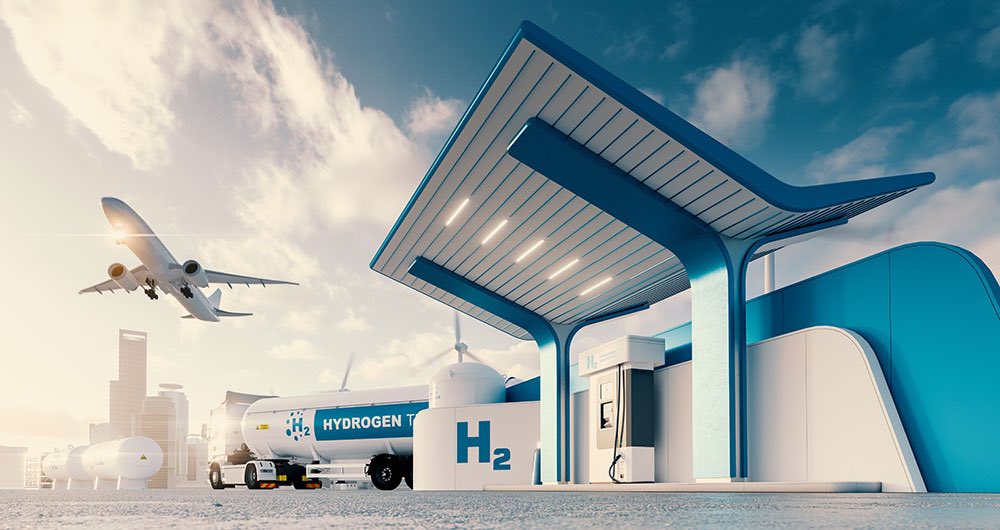
According to reports, the global hydrogen aircraft market is valued at $23.71 billion in 2030 and is projected to reach $144.53 billion by 2040, registering a CAGR of 20.5% from 2030 to 2040.
With so many players betting big on the game, recent studies on the potential of hydrogen-powered aviation have shown that such planes could enter the market as soon as 2035.
Representative | VINCI Concessions
In what can be termed the first engineering joint venture between Groupe ADP and Air Liquide, the two companies have agreed to form a 50:50 joint venture (JV) dedicated to facilitating airports in their bid to integrate hydrogen into their infrastructure.
The global aviation industry has a significant contribution of about 2.5% of carbon emissions across the globe. The rising focus of the aviation industry to de-carbonize the aircraft is significantly fueling the adoption of hydrogen aircraft across the globe.
Representative | Airport Technology
The group’s collaboration to act now to pave the way for decarbonized air transport worldwide exemplifies their ambitions for greener, cleaner and sustainable travel in the years ahead.
As the first hydrogen-powered commercial aircraft are expected by 2035, this collaboration will provide airports in France and across the world with the engineering and services they will need in their transition to hydrogen.
Airports will have to start considering their development strategy well in advance, if they are to welcome the arrival of hydrogen-powered aviation, especially regarding hydrogen volumes needed over time and the optimal hydrogen supply chain, which depends on an airport’s unique location and characteristics.
Hydrogen is necessary to tackle the challenge of the energy transition. Studies carried out with Groupe ADP over the last year have confirmed hydrogen can have a major contribution to decarbonize the airport sector. Airports have to be ready for hydrogen-powered aircrafts by 2035, and to foster the emergence of a hydrogen mobility ecosystem at large. This is why now is the time to work on adapting infrastructures. Air Liquide and Groupe ADP therefore project to create the first joint venture specialized in this field, building on our initial collaboration and pooling the complementary expertise of our two Groups. In line with our commitments, our ambition is to actively contribute to the emergence of a low-carbon society.Matthieu Giard, Vice President, member of the Air Liquide Executive Committee notably supervising hydrogen activities, said
Twitter (March 2, 2021)
Apparently, the latest collaboration follows a memorandum of understanding (MoU) that was signed last year to conduct feasibility studies for the arrival of hydrogen-driven aircraft. In 2021, Air Liquide and Groupe ADP initiated the first collaboration, together with Airbus, to carry out a year-long study into the configurations of 30 airports worldwide, with a particular focus on Paris-Charles de Gaulle and Paris-Orly.
FuellCellsWorks
Having worked together with Air Liquide to produce studies over the past year, this joint venture was a logical next step. With it, we expect to have the first ground-based hydrogen technology use cases in place at Paris-Charles de Gaulle and Paris-Orly airports in 2023. Our collaboration with Air Liquide is a long-term one and is based on the complementarity of our respective expertises : the hydrogen supply chain for Air Liquide and airport infrastructure and operations for Groupe ADPEdward Arkwright, Groupe ADP Deputy Chief Executive Officer, said
Edward Arkwright | Group ADP
Air Liquide will cash in on its expertise in hydrogen-from production through electrolysis, liquefaction, and storage to the distribution of hydrogen to aircraft whereas Groupe ADP will contribute its expertise in airport engineering and know-how in airport operations.
Representative | 2Luxury2.com
Air Liquide-a world leader in gases, technologies and services for Industry and Health, is present in 75 countries with approximately 66,400 employees and serves more than 3.8 million customers and patients.
Groupe ADP, formerly Aéroports de Paris or ADP, is an international airport operator based in Paris. It is one of the few airport operators to be present in all aspects of the airport value chain, from upstream studies in engineering, master planning and design, to the commissioning and operation of complex infrastructure. Its alliance with TAV Airports and with GMR Airports give rise to the world's leading airport network and is currently active in 125 airports in 50 countries around the world.
SOURCE(s)
COVER: Groupe ADP
Read next
In the 2022 Skytrax World Airport Awards, Kempegowda International Airport, Bangalore (BLR Airport) was named the best regional airport in India and South Asia.
The SKYTRAX World Airport Award is the largest passenger satisfaction assessment and the most prestigious among all the surveys measuring the excellence and quality of airports.
Bengaluru Airport Named Best Regional Airport in India and South Asia
The award is based on a customer satisfaction survey conducted globally, that reflects passengers’ endorsement of BLR Airport’s services. The survey evaluates the consumer experience across airport service and key performance factors including check-in to arrivals, transfers, shopping, security, immigration, to departures at the gates.
“It brings us enormous joy in accepting the award as the Best Regional Airport in India and South Asia. Our constant commitment and relentless efforts are to provide the greatest airport experiences for our passengers. The awards that we receive year on year is an acknowledgment that we continue to get this right.”Hari K Marar, MD & CEO, Bangalore International Airport Ltd (BIAL)
The Awards ceremony was held at Passenger Terminal EXPO in Paris, France, on Thursday, June 16, 2022. The event is one of the most prestigious quality awards for the airport sector, with CEOs, Presidents, and senior management from airports across the world in attendance.
The Kempegowda International Airport was in the news recently when it achieved a vital sustainability goal by becoming 100% water positive, which signifies that the BLR airport replenishes more than it consumes. The water positive journey started in 2019 when the Water Positive Index (Water replenished / Water consumed) was measured at 1.37.
In July 2021, the airport achieved 100% water positivity. On August 7, 2021, the KIA added another feather to its hat when it started using IoT (Internet of Things) tech to monitor temperature-sensitive cargo in one of its terminals.
In just a short span, Bengaluru international airport has already become the busiest airport in South India and the third-largest in the country. It caters to over 22 million passengers annually and is growing at 22.5% year on year.
Read next
Most Indian airports will become carbon neutral by December 2024 and achieve Net Zero emissions by 2030, according to a senior official of the ministry of civil aviation.
MoCA had collected carbon emission data from the airports followed by a knowledge-sharing session on airport carbon emission and mapping to standardize carbon accounting and reporting framework of Indian airports and to create awareness on climate change mitigation targets and measures.
Airports can pursue low-cost energy efficiency measures like improving building insulation. These kinds of measures simultaneously reduce Greenhouse Gas (GHG) emissions and operating costs.
The airline industry is responsible for nearly 3% of global carbon dioxide emissions.
Airports can also purchase renewable energy, install airport renewable energy systems (provided they are compatible with airport operations), reduce energy consumption, monitor the efficiency of heating, ventilation, and cooling systems, and purchase low or zero-emission vehicles and GSE.
The airline industry is responsible for nearly 3% of global carbon dioxide emissions.
The airline industry believes its quickest path to net-zero is replacing jet fuel with “sustainable aviation fuel” (SAF) made from renewable sources, such as plants or used cooking oil. In theory, SAF can cut flight emissions by around 80%, depending on how it is made.
GMR-led Delhi International Airport Limited has already become Asia Pacific’s first Level 4+ (Transition) accredited airport under ACI’s airport carbon accreditation program.
GMR-led Delhi International Airport Limited has already become Asia Pacific’s first Level 4+ (Transition) accredited airport under ACI’s airport carbon accreditation program.
At Delhi airport, around 40,000 air purifying plants have been put inside the three-terminal buildings of the airport to clean the indoor air. Nearly 3.9 million square feet within the IGI Airport premises is covered with plants and shrubs.
CSMIA has also taken several steps during the pandemic to optimize energy consumption, resulting in a reduction of 35% of energy usage.
Union Civil Aviation Minister Jyotiraditya Scindia, recently said that India is working on making its airport carbon-neutral in future.
With renewable energy from solar playing a key part in such efforts, it's time to set clear goals for every large airport across the country to be powered by renewable energy.
Union Civil Aviation Minister Jyotiraditya Scindia, recently said that India is working on making its airport carbon-neutral in future.
At the headquarters of the International Civil Aviation Organization (ICAO) in Montreal, Scindia said, the way the civil aviation industry of India has bounced back post the Covid-19 pandemic with all protocols in place shows its resilience and determination. With a robust and holistic plan for the future, he is sure soon, his ministry will set new milestones in the air.
Read next
Delhi Airport named the best airport in India and South India for the 4th consecutive year
Radhika Bansal
18 Jun 2022
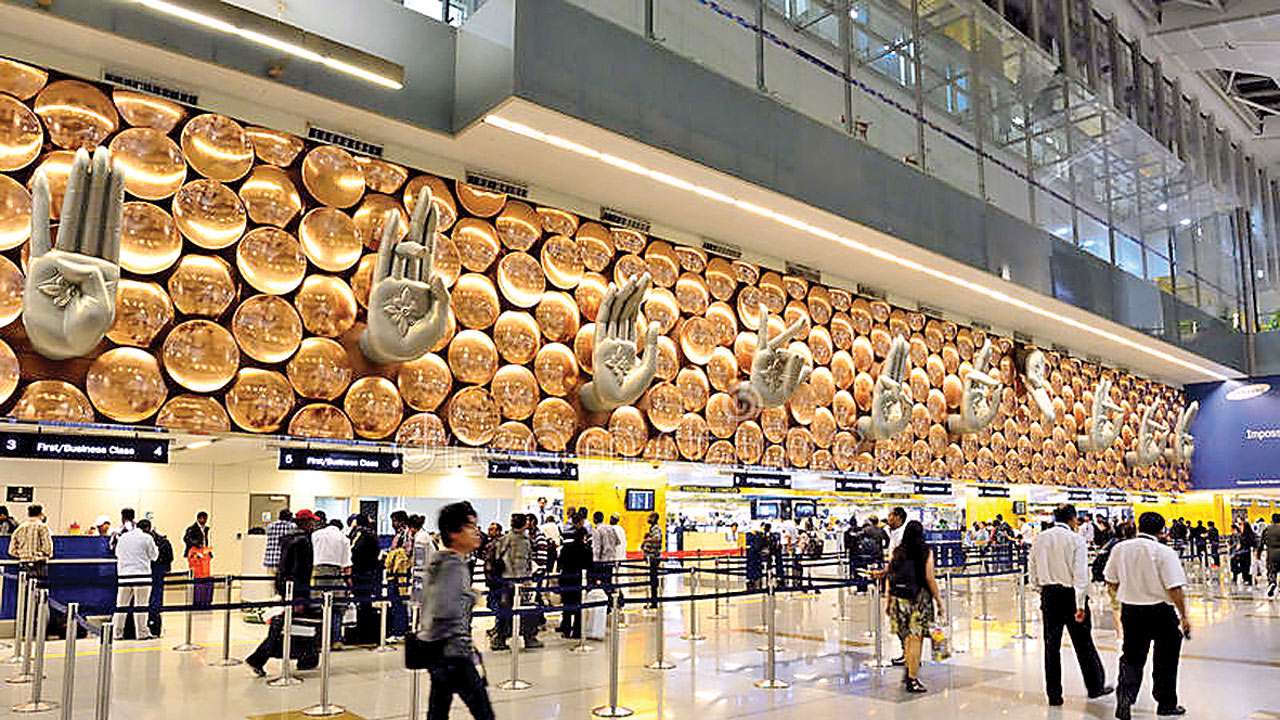
Delhi Airport (Indira Gandhi International airport) has been adjudged the best in India and South Asia for the fourth consecutive year at the Skytrax World Airport Awards, an official statement said on Friday, June 17.
The airport also improved its overall ranking to 37th from last year's 45th position, said the statement from GMR which added that it is the only airport from India to be included in the world's top 50 airports. The GMR Infra-led airport has also been declared "the cleanest airport" in India and South Asia.
Delhi Airport was named the best airport in India and South India for the 4th consecutive year
The Skytrax World Airport Awards are based on an annual global airport customer satisfaction survey assessing customer service and facilities across 500 airports, the statement said.
"All the airport staff, stakeholders and partners working at the airport have made Delhi airport the best airport in India and South Asia with their constant resilience, focus, and customer-centricity.The Delhi airport has always set a new benchmark in providing the best airport experience to all its passengers and will continue to do so."Videh Jaipuriar, CEO, Delhi International Airport Ltd (DIAL), GMR Infrastructure Limited-led consortium
The survey questionnaires were completed by over 100 nationalities of airport customers for nine months from September 2021 to May 2022.
It evaluated customer experience across airport service and product key performance indicators including check-in, arrivals, transfers, shopping, security, and immigration and departure, it added.
DIAL said the Skytrax World Airport Awards are the most prestigious accolades for the airport industry, voted by customers in the largest, annual global airport customer satisfaction survey.
ALSO READ - Delhi airport posted a fabulous recovery in March to become the third busiest airport in the world
DIAL said the Skytrax World Airport Awards are the most prestigious accolades for the airport industry, voted by customers in the largest, annual global airport customer satisfaction survey.
Hamad International Airport has been named the World’s Best Airport for the second year running, announced at the 2022 World Airport Awards that were held at Passenger Terminal EXPO in Paris, France on 16th June 2022.
ALSO READ - Bengaluru Airport Named Best Regional Airport in India and South Asia
In the 2022 Skytrax World Airport Awards, Kempegowda International Airport, Bangalore (BLR Airport) was named the best regional airport in India and South Asia.
Read next
Hyderabad airport adjudged as the 'Best Airport Staff in India and South Asia’
Radhika Bansal
18 Jun 2022
The GMR Hyderabad International Airport Ltd (GHIAL), a GMR-led consortium, on Friday, June 17 said the Rajiv Gandhi International Airport (RGIA) was adjudged having the ‘Best Airport Staff in India and South Asia’ at the Skytrax World Airport Awards 2022.
The airport has also progressed in its overall ranking, moving from 64th position in 2021 to 63rd position in 2022 in the World’s Top 100 Airport league.
Hyderabad airport adjudged as the 'Best Airport Staff in India and South Asia’
Additionally, RGIA bagged the second rank for the Best Regional Airport in India and South Asia 2022; the third rank for Best Airport in India and South Asia 2022; the fourth rank in Cleanest Airport in India and South Asia 2022; and the sixth rank in the Best Regional Airport in Asia 2022 categories.
“We would like to dedicate this prestigious award to all our remarkable airport staff, stakeholders and partners working at Hyderabad Airport without whose support we wouldn’t have been able to achieve this during a challenging phase of the pandemic. With the motto of ‘Passenger is Prime’, our team, with its unwavering dedication and commitment, have ensured that every passenger is taken care of while traveling through our airport. All stakeholders worked collaboratively towards passenger delight with a single-minded focus. With a travel rebound now happening, we are all geared up to provide our passengers a memorable transit through the Hyderabad International Airport.”Mr. Pradeep Panicker, CEO, GMR Hyderabad International Airport Ltd (GHIAL)
The trophy was presented to RGIA officials at a ceremony at the Passenger Terminal EXPO in Paris, France, according to a press release.
ALSO READ - Hyderabad airport’s remodelled passenger terminal set to open soon
“We congratulate Hyderabad Airport for their success in winning this most important award as the Best Airport Staff in India & South Asia. The last two years has been extremely difficult for airports worldwide having to cope with the many restrictions of COVID-19 and the severe drop in travel demand. With air travel quickly returning to a more normal level, the challenge to deliver the highest standards is being well met here at Hyderabad Airport.”Edward Plaisted, CEO, Skytrax
Rajiv Gandhi International Airport is an international airport that serves Hyderabad, the capital of the Indian state of Telangana. It is located in Shamshabad, about 24 kilometres (15 mi) south of Hyderabad.
It was opened on 23 March 2008 to replace Begumpet Airport, which was the sole civilian airport serving Hyderabad. Built over an area of 5,495 acres (2,224 ha), it is the largest airport in India by area. It has also ranked in AirHelp's list of top 10 airports in the world.
Hyderabad airport is the fourth busiest airport in India by passenger traffic
The fourth busiest airport in India by passenger traffic, it handled 12.4 million passengers and 140,075 tonnes (154,406 short tons) of cargo between April 2021 and March 2022.
The airport has one passenger terminal, a cargo terminal and two runways. There are also aviation training facilities, a fuel farm, a solar power plant and two MRO facilities.
The airport serves as a hub for Alliance Air (India), Blue Dart Aviation, SpiceJet, Lufthansa Cargo, Quikjet Cargo, TruJet and IndiGo. It is also a focus city for Air India.


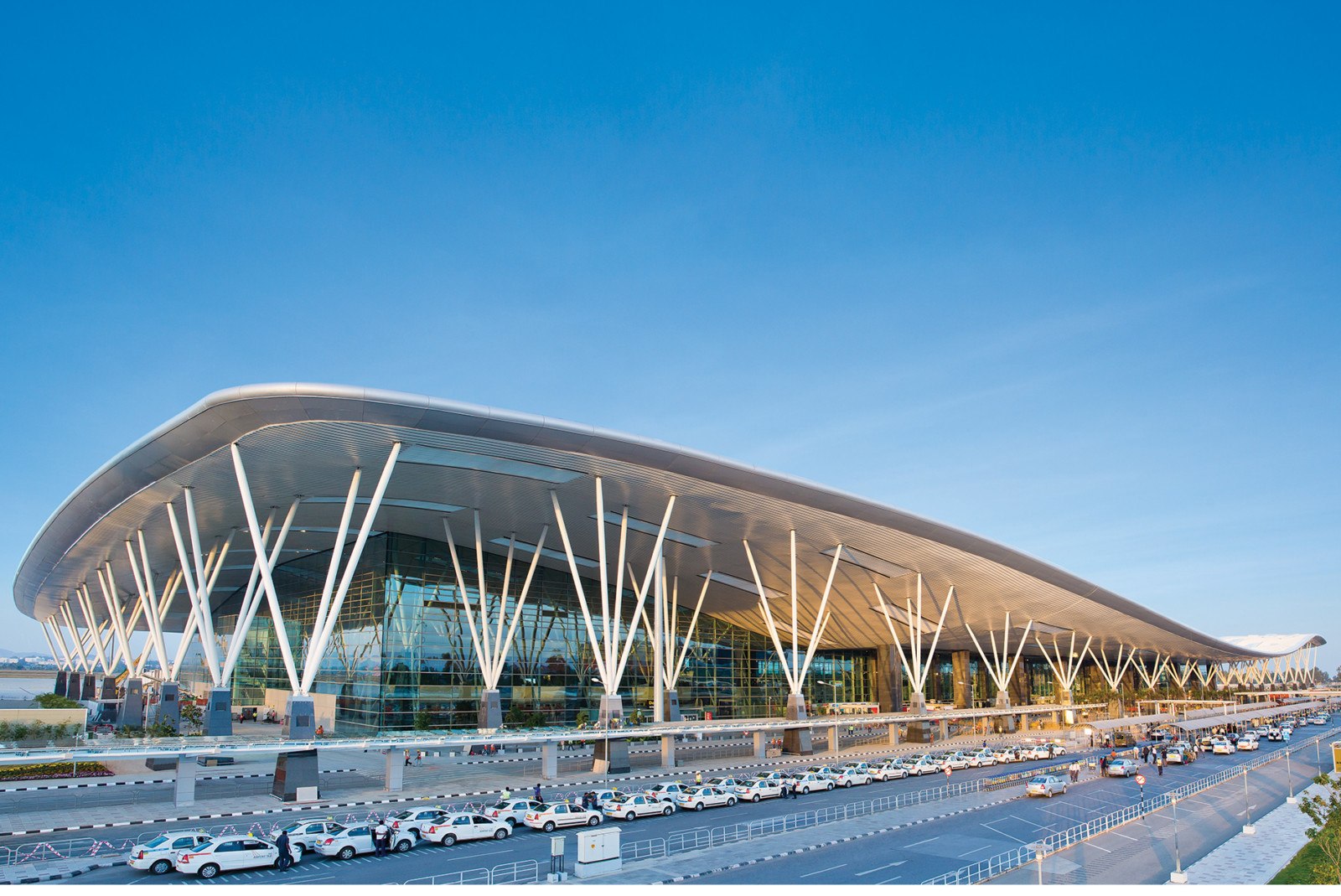
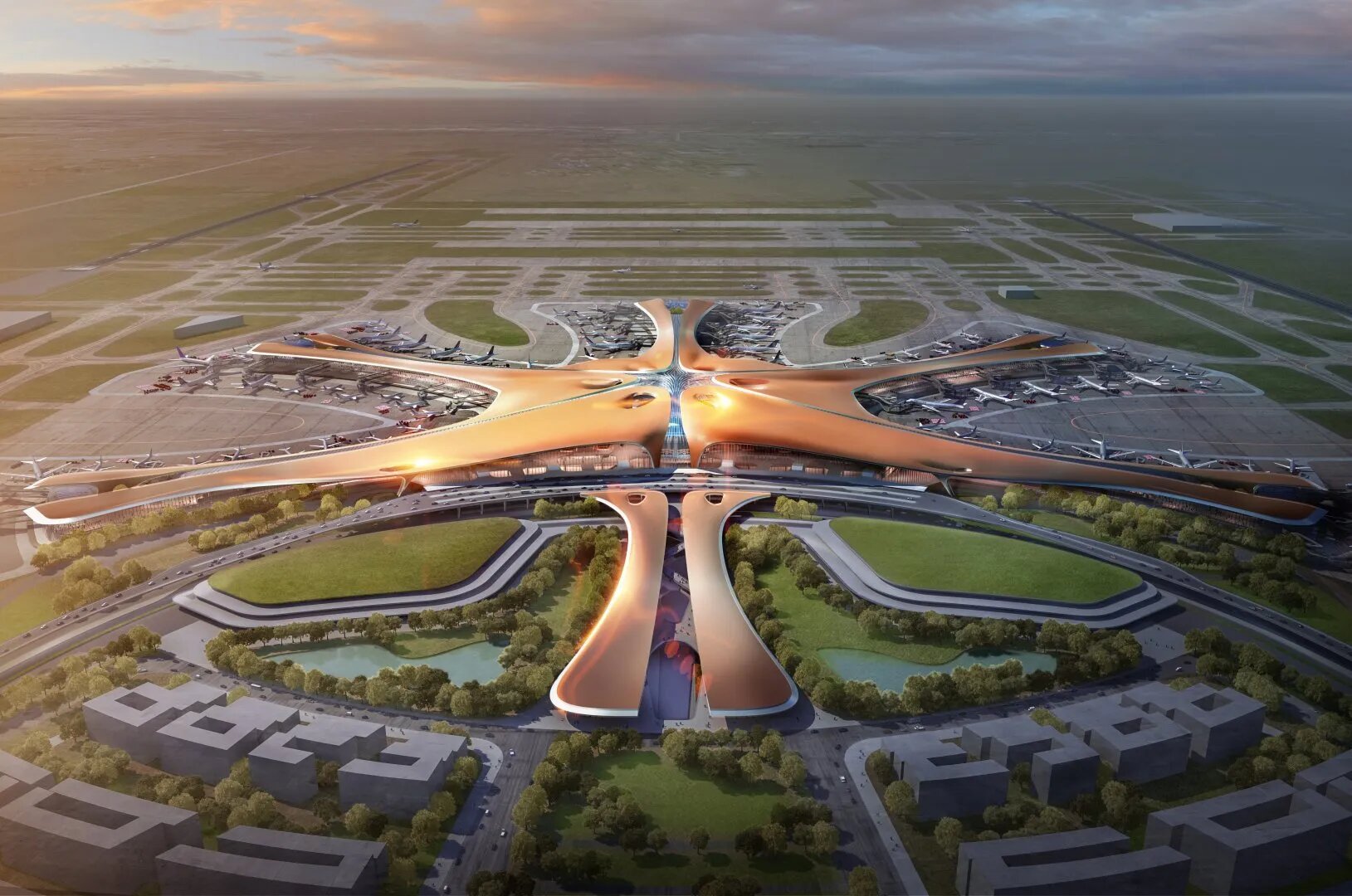

Comment